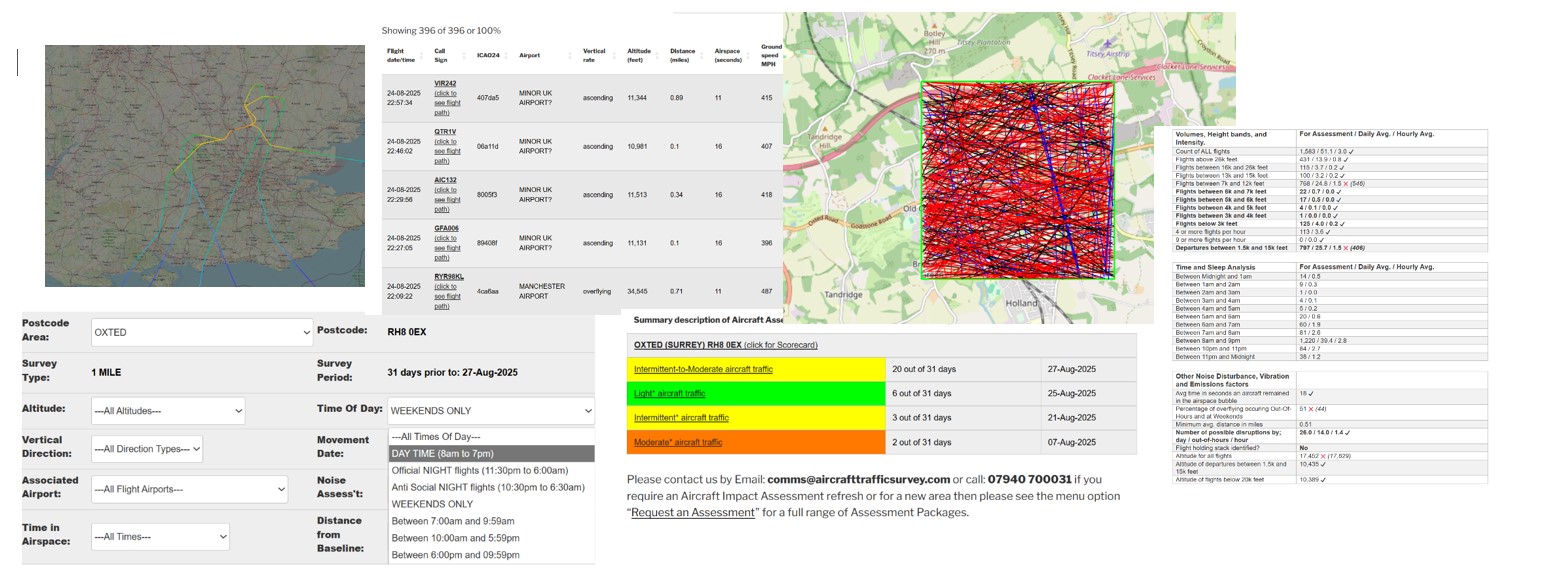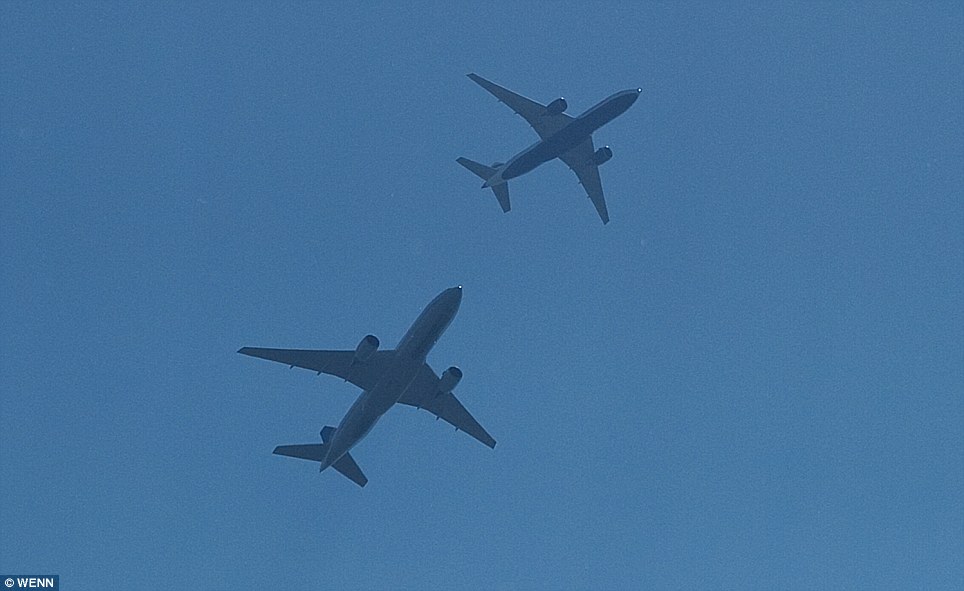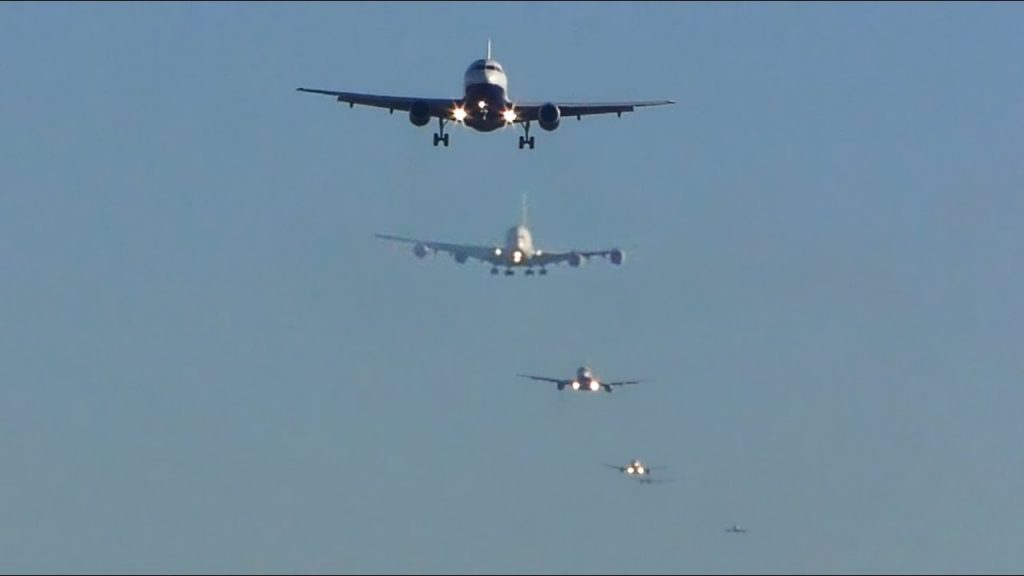The Aircraft Traffic Survey service is showing a growth in the use of the 90 second Arrival Holding Stack for flight separation which is a process used by NATs to prevent “bunching” when Arrival flights transition from unregulated airspace into the regulated airspace which is below 6,500 feet.
Understanding the existence of aircraft Arrival routes and Holding Flight stacks is very important when deciding on the area in which to purchase a home as the existence of flights means some form of disruption. It’s not something to discover once Stamp Duty and Solicitors costs have been paid.
Flight Arrivals, unlike flight Departures, are less regulated and are used at any time, 24 hours a day, 7 days a week. The Operational Management policies for flight Arrivals are totally owned, designed and managed by a Government body know as NATs. The NATs Air Traffic Controllers are responsible for the physical routes and altitudes taken by the individual aircraft when travelling within UK airspace. Some Air Traffic Controllers are based in regional centres, and others are seconded to the individual airports. NATs also subcontracts roles and responsibilities including the Air Traffic Controllers to 3rd party service companies. This structure makes change very complex to implement and over extended time frames.
NATs have created a number of Arrival flight holding stacks over the UK that are typically located 30-40 miles away from the destination airport. Their design resembles 7 oblong shaped circuits arranged vertically, the lowest being 7,000 feet and rising to 15,000 feet. The circuits are 10 miles in length and 6 miles wide and take around 4 minutes for an aircraft to navigate although many aircraft are “pulled” from the stack by NATs after 90 seconds by performing a tight banking manoeuvre.
Holding stacks tend to have a single entry point and multiple exit points and often hold 5-6 planes at the same time and as one aircraft exits another enters. Additionally, because they occur at above 7,000 feet they are very lightly (not) regulated for noise and air pollution even though the aircraft traffic volumes can be very high e.g. 30-60 planes per hour.
When is an Arrival Holding Stack used?
The NATs Air Traffic Controllers will decide and instruct the pilot when to pass directly through an Arrival holding stock or at what altitude to join the stack. Factors that can increase the usage of the stack include;
- delays at the destination airport i.e. reached full capacity (highly likely)
- flights arriving before the airport opens (highly likely)
- flights arriving early (highly likely)
- flight separation (highly likely)
- bad weather (unlikely)
- emergencies (unlikely)
Fortunately not all plots and homes are impacted in the same way even though they are in the same geographic area. This is because aircraft disturbance can be very localised. The overall impact is identified and assessed by the new Aircraft Traffic Survey service.


